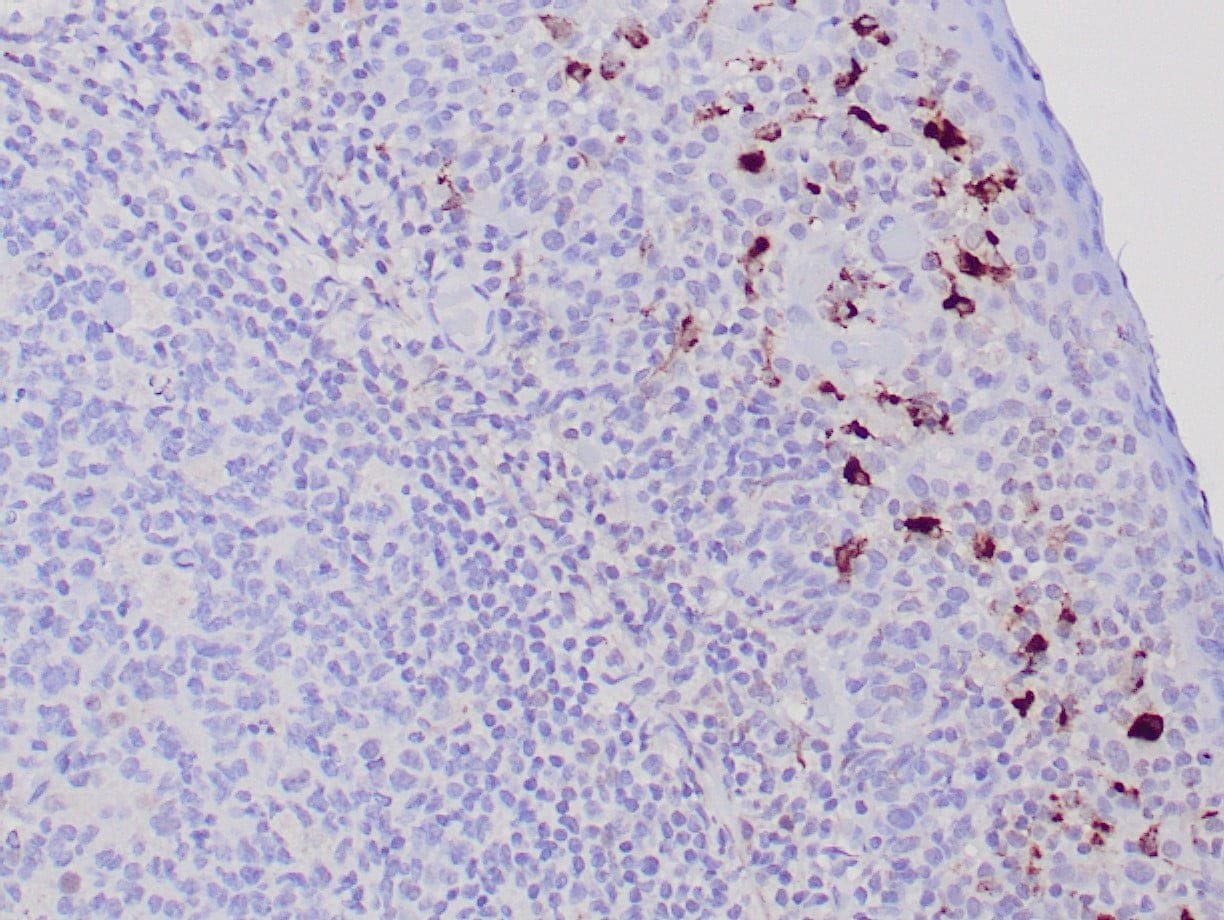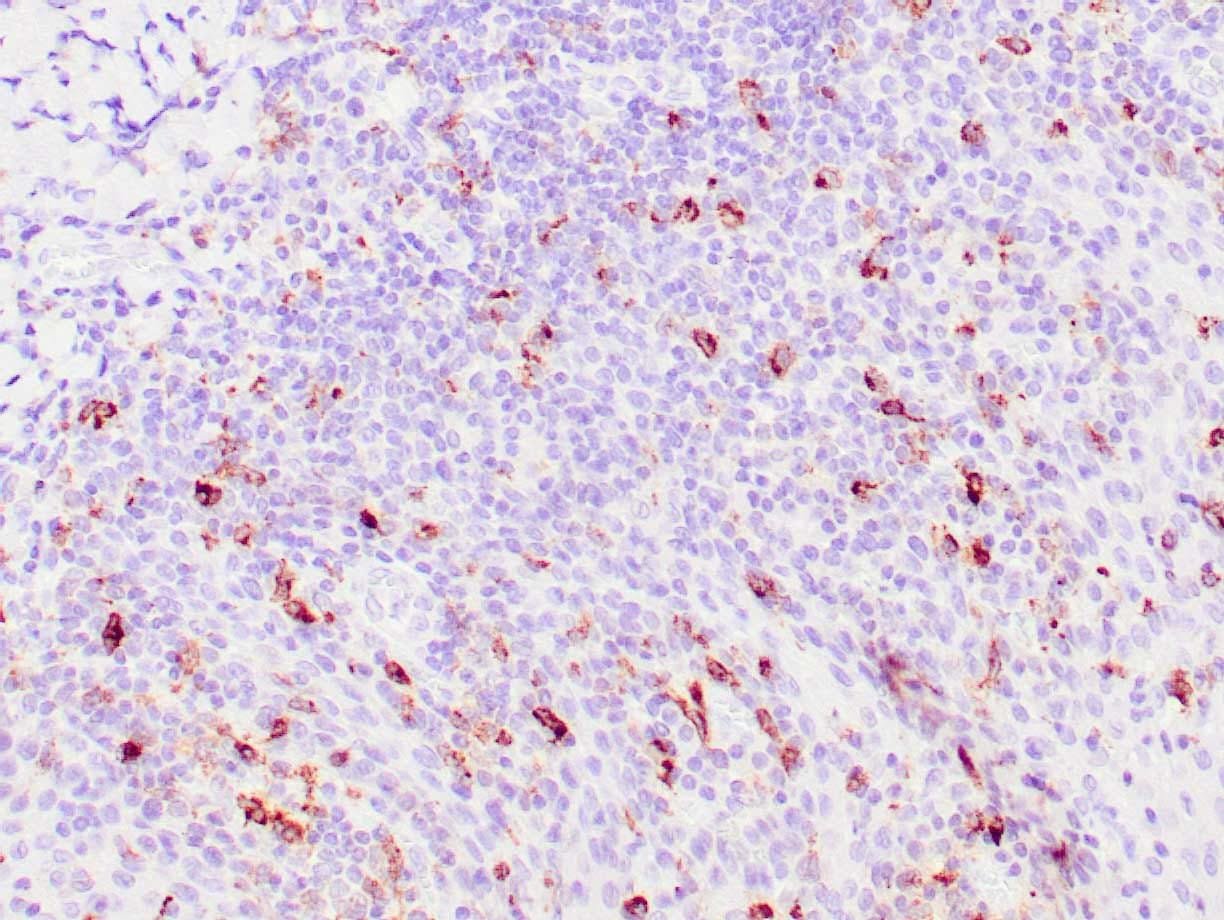Showing all 2 results
TRAcP
TRAcP: Tartrate-resistant acid phosphatase (TRAcP) is a marker often used in osteoclasts and is relevant in diagnosing certain bone lesions. Its detection aids in understanding bone pathology and differentiating between various bone disorders.
| target | type | reactivity | applications | ||||
|---|---|---|---|---|---|---|---|
| No products found | |||||||

IHC with antibody [6390] : Formalin-fixed, paraffin-embedded human tonsil stained with anti-TRAcP antibody using peroxidase-conjugate and DAB chromogen. Note the cytoplasmic staining of B cells

IHC with antibody [6391] : Human spleen involved by hairy cell leukemia stained with anti-TRAcP antibody using peroxidase-conjugate and DAB chromogen. Note the cytoplasmic staining of leukemia cells.

